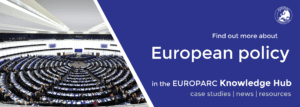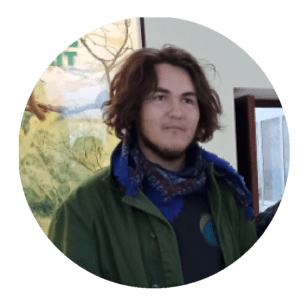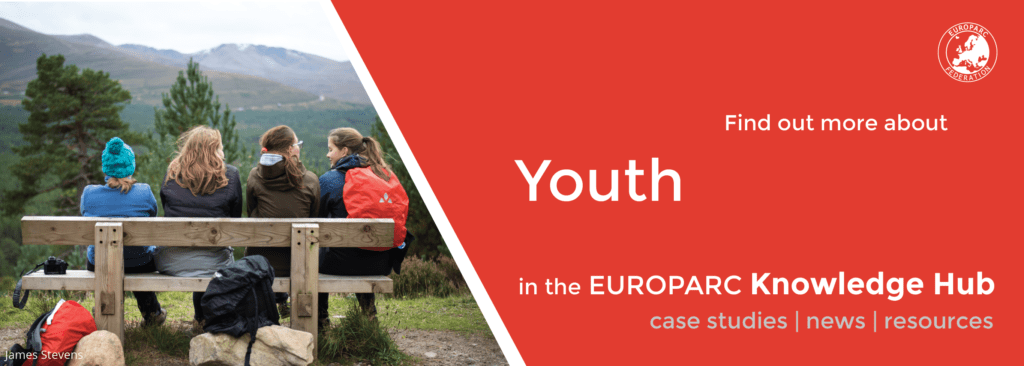EGNOS: Try a free public tool for accurate mapping
© Unsplash
New digital tools can be of great benefit to the work of Protected Areas by facilitating the collection of information, monitoring, and exchanges of good practices. One of these is the EGNOS initiative: the European Geostationary Navigation Overlay Service.
What is EGNOS?
The European Geostationary Navigation Overlay Service (EGNOS) is the public and free satellite-based augmentation system (SBAS) provided by the European GNSS Agency (GSA). Briefly, EGNOS is a free public service, provided by the European Commission that corrects the GPS data, reducing the error of the location measurements. It is easy to use, only needs to be activated on regular navigation devices (more information on installation is below).
How can EGNOS benefit Protected Areas?
Protected Areas can benefit from EGNOS for typical GPS field operations carried out in the framework of conservation of their ecosystems and management of their infrastructures. By providing more accurate positioning data, EGNOS allows to have better references of the Protected Areas’ elements in digital maps of geographic information systems (GIS). In this sense, EGNOS improves the location of individual elements such as dens, lairs, nests, shrubs, trails, trees, dustbins, litter, picnic tables, signposts, etc.
In addition, perimeters and areas, such as those of burned fields, ditches, groves, peatlands, bodies of water and more, can also be measured more accurately with EGNOS. In this way, EGNOS facilitates, to both field managers and operators, the performance of tasks related to the inventory, monitoring and maintenance of both natural and manmade items in Protected Areas. Concretely, positioning systems like EGNOS can contribute in activities such as trail tracking, species monitoring, sample collection and safety…
Watch a short video that shows how EGNOS can be used:
How does it work?
EGNOS is available in almost all handheld GPS devices so no additional infrastructure (base station, radio link, mobile network coverage, etc.) is required. Protected Areas field employees only need to activate and configure EGNOS correctly in their equipment to automatically get more accurate positioning data at no cost. In this sense, it is essential to set the current active EGNOS satellites, whose PRN identifiers are provided in the EGNOS User Support Website. Some examples on how to configure EGNOS in mapping and GIS receivers can be found here.
For more detailed information of the proper configuration of EGNOS and its benefits for mapping and GIS applications, please take a look at this webinar recording. In order to have all the EGNOS up-to-date information with you, the EGNOS app is available for both Android and iOS. Finally, for any inquiry or issue, please do not hesitate to contact the EGNOS helpdesk by email: egnos-helpdesk@essp-sas.eu, phone: +34 911 236 555 or online form.
European Regional Development Fund & Cohesion Fund approved
Picture by Fas Khan on Unsplash
The European Regional Development Fund and Cohesion Fund have been approved. They provide exciting opportunities for Protected Areas.
The EU has recently reached a formal agreement and the new ERDF regulation, which this time also includes the Cohesion Fund. It entered into force on the 1st of July. The European Regional Development Fund (ERDF), together with the Cohesion Fund, aims to strengthen economic, social and territorial cohesion in the European Union by correcting imbalances between its regions.
EUROPARC is very pleased to see that, also thanks to the interest of MEP Cozzolino, the work of our Brussels office and because of the proactive support of Enzo Lavarra (EUROPARC Council), the close cooperation established with the European Parliament has been successful and the role of Protected Areas has been integrated in one of the pillars of the EU policy. Now it will be up to national authorities to allocate funds to Protected Areas.
Find here the full text of the ERDF regulation
Of particular interest for our membership is the fact that the strategic and operational priorities for 2021-27 include significant resources relevant for Protected Areas activities.
The ERDF identifies among the strategic priorities for the coming years, the preservation and valorisation of Protected Areas, the development and promotion of sustainable tourism, the development of climate change adaptation strategies and mitigation measures, the restoration of natural areas.
In 2021-2027 EU cohesion policy has set a shorter, modern menu of 5 policy objectives supporting growth for the period 2021-2027.
- a more competitive and smarter Europe
- a greener, low‑carbon transitioning towards a net zero carbon economy
- a more connected Europe by enhancing mobility
- a more social and inclusive Europe
- Europe closer to citizens by fostering the sustainable and integrated development of all types of territories
Some of the specific and operational objectives described by the program are especially relevant for Protected Areas. In particular:
The priority for a greener and low carbon Europe, known as Policy Objective (PO) 2, towards which all regions and Member States will concentrate at least 30% of their allocation. This priority will be achieved – among others – by:
- promoting climate change adaptation and disaster risk prevention and resilience, taking into account eco-system based approaches;
- enhancing protection and preservation of nature, biodiversity and green infrastructure, including in urban areas, and reducing all forms of pollution;
Additionally PO4: The priority for a more social and inclusive Europe, will be achieved among others by:
- enhancing the role of culture and sustainable tourism in economic development, social inclusion and social innovation;
It is also important to consider that those priorities will then be reflected in operational programs being developed by Member States (or regional authorities) and will also be the baseline of other operational instruments that fund cooperation projects, such as the INTERREG programs. Please note also, that Interreg funding programs are currently being developed and in autumn the first call for projects will be published.
Want to know more?
EU Large Carnivore Platform: New CAP & coexistence measures
After long negotiations on the Common Agricultural Policy reform for the 2021-2027 period, a provisional agreement between the Council and Parliament was finally reached on 25 June. Read about the changes that the new CAP holds for livestock protection.
CAP reform and large carnivore coexistence measures
Although the current CAP rules have been extended for 2 years and the new CAP measures will likely come into place at the start of 2023, it is already time to look ahead. What does the new CAP mean for financing livestock protection measures and for wider measures to support coexistence with large carnivores?
The EU Platform on Coexistence between People and Large Carnivores, of which EUROPARC is a member, has produced a briefing note describing how coexistence measures with large carnivores (especially protection of livestock) can be financed under the current and new Common Agricultural Policy.
The main measures to protect livestock against large carnivore depredation are fencing, livestock guarding dogs and shepherding.
Currently, the protection measures can be funded under the Rural Development Programmes (Pillar 2 of the CAP), which run until the end of 2022. Under the new CAP, which is likely to begin in January 2023, the same measures can be funded under the new Rural Development Programmes.
Additionally, the ecoschemes under the direct payments’ budget of the new CAP (Pillar 1) could be used to support these measures. The final form of ecoschemes has not been defined yet, but The European Commission has published a list of potential practices earlier this year. Among them, the most relevant ones that could potentially be used as additional support to livestock breeders coexisting with large carnivores are:
- Agroecology: support to low intensity, grass-based systems – could potentially be used for maintenance payments in areas where large carnivores are present
- Husbandry and animal welfare plans: housing and open-air grazing management – could potentially be used for fencing and night-enclosure systems
- High nature value farming: shepherding and transhumance – could be used to support shepherding in areas where large carnivores are present
Preparation of CAP Strategic Plans
Member States and their managing authorities are currently working on their CAP Strategic Plans, that will be afterwards reviewed by the European Commission. They should make sure that, where relevant, livestock protection measures are included. The draft regulation obliges managing authorities responsible for the Strategic Plans to collect inputs from stakeholders including other relevant public authorities, economic and social partners and bodies representing civil society.
For the final National Strategies, authorities together with stakeholders should ensure that large carnivore coexistence is sufficiently considered, and at the same time counter-productive measures are avoided.
Click here to read the full briefing note.
To keep informed on the Platform’s work, sign up for their biannual newsletters.
Youth+ in Estonia establish their own NGO!
Second meeting of the Association in Matsalu National Park © Kalle Kõllamaa
In 2020 a group of young people active in the Youth+ Programme in Estonia came together to establish their own NGO Eesti Rahvusparkide Noorte Looduskaitsjate Selts (Association of Young Conservationists of Estonian National Parks). On that occasion, we interviewed one of the founding members Uku Freiberg.
Get Youth Involved!
At EUROPARC we believe that involving Young People at all levels of Protected Area management is essential. Apart from our successful Junior Ranger programme, we launched the Youth Manifesto in 2018. Written by young people from all over Europe, it is a starting point for Parks to start involving and empowering young people in Protected Area management. Additionally, it aims to tackle problems young people face in rural areas.
The Youth+ programme is one way for Parks to implement the Manifesto. It aims to help young people develop their leadership, communication, advocacy and nature conservation skills and offers them a chance to stay active in their Park when they can no longer participate in Junior Ranger programmes.
We were delighted to hear that Youth+ in Estonia are putting exactly these skills to use by establishing their very own NGO! The Association of Young Conservationist of Estonian National Parks allows these young people (aged 17-22) to gain independence and additional motivation for contributing to nature protection in Estonia. Below you can read a small interview with founding member Uku Freiberg on the importance of involving youth in Parks and Protected Areas and what they hope to achieve with their NGO.
Inspired?
Then why not start implementing the EUROPARC Youth Manifesto or Youth+ programme in your area?
or show how your Park is #StrongerWithYouth by using the hashtag on social media!
Interview with Uku Freiberg
How did you get involved in your Protected Area?
My interest in nature started because I live in Karula National Park. Over the years I have come to value the nature around me and seeing nature disappearing everywhere else caused me to worry about it. Also when I was little I often went hiking and I spent a lot of my time outside. I think that’s where my love and interest for nature mostly came from.
Why do you believe it is important to involve youth in Protected Areas?
I think that if we involve young people into protected areas they get a connection with nature and so when they grow older they know to value it more. In the future, when these young people are grown up and living their lives, maybe then they will take better care of nature than the leaders today. I hope that is more likely to happen when they have some touch or connection with nature and its charm and pain.
How do you think Protected Areas can best involve young people?
In my opinion when involving young people it is important to make them understand the value of nature. We are not winning anything if there are a number of young people who for example know that deforestation is bad, but they have never been in forest and they have no connection with it. They know the problem, but if they have no experiences with that topic they can’t relate to it so well.
How did the idea to start the Association of Young Conservationists of Estonian National Parks come to be amongst the Youth+ participants?
The founding members are all former Junior Rangers. The idea to participate with Youth+ came, because we believe that the more the natural protection organizations cooperate, the more we can make a change. Additionally, our interest and Youth+’s interests are similar, so such a solution would make the most sense in our opinion 🙂
Who can be part of the NGO? Who are the current members?
To become part of our NGO you must be between 16 and 29 years old and have previously attended Junior Ranger courses. And after he or she has joined, the member will represent one of the Estonian national parks where they participated in Junior Ranger courses.
What kind of activities are you organising / do you want to organise?
We would like to organise nature protection schoolings and practical nature protection activities like cleaning black strokes feeding areas or maintaining wood meadows. These activities are mainly targeted for young people to become more sustainable and more environmentally friendly.
How do you reach new audiences?
Currently, we just try to spread our NGO name hoping that young people who have the same interest as us, will join. Because we are still a young organisation we haven’t made a big advertisement so far.
What has the Association achieved so far?
So far we have gathered together a group of young people who are so interested in nature protection that they want to actively support it. Also, we made a mailing list, so when someone who has a good idea or needs help to do something related to nature conservation, this information can be shared with other members. Additionally, we have carried out a contest that lasted the entire month of January. The contest included nine challenges about reducing our ecological footprints. On every Monday and Thursday we gave new challenges, for example how to reduce food waste or where to get your broken things fixed, rather than just buying new ones. And most active participants got rewarded at the end of the month.
What does the Association hope to achieve?
We hope to raise society’s environmental awareness and make the young people’s voice heard about environmental issues. Also we hope to get more young people involved with practical nature protection.
What do you think needs to change in order to draw more young people to nature conservation?
To draw more young people to nature conservation in my opinion the influence must start at home. It is more likely for young people to get in touch with nature conservation if they have parents who either deal with that topic or who just know how important it is. I am not saying it is impossible for young people who don’t have parents with such interest to get connected with nature conservation, but it helps a lot when they have parents who have that kind of connection with nature.
What do you think is the most important skill young people need if they want to work for nature?
To work for nature I think it is very important to have a connection with it, something that you like about nature and something that you want to keep from disappearing. Without it, I don’t really believe working for nature is for you. If you do not have a connection with it then you’re not going to put 100% in it and that is not going to work. Working for nature requires a lot of persistence.
Things will not change overnight and you have to make sure that after a long time of steadiness you still have the will and strength to keep it going.
I believe that connection with nature and persistence are the skills that you will need to work for nature.
What is your tip to other young people in Europe that want to contribute to a more sustainable world?
Collaboration.
You can follow the Association on Facebook and Instagram under @nooredlooduskaitsjad
Is your Park implementing the Youth Manifesto or taking part in the Youth Programmes of EUROPARC? Do you have a best practice example we should highlight? Then contact us under communications @ europarc.org!
The creation of the NGO is also a case study in EUROPARC’s Knowledge Hub! Check it out here:


